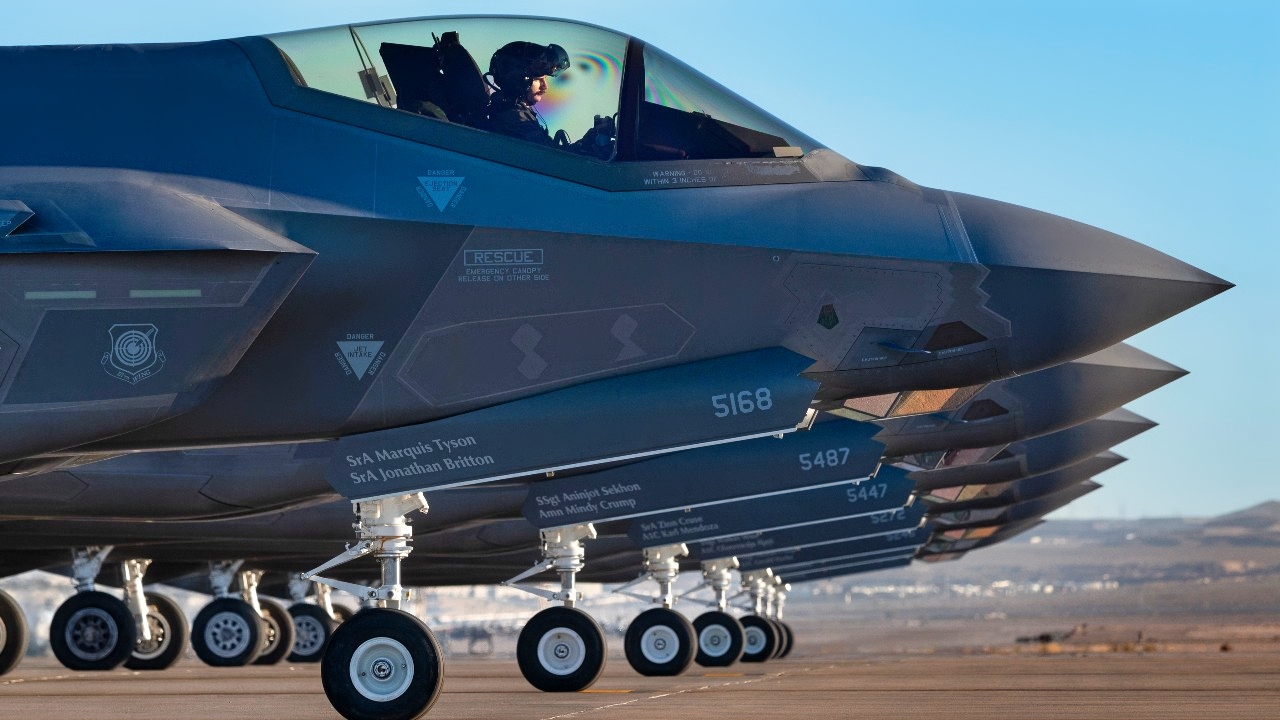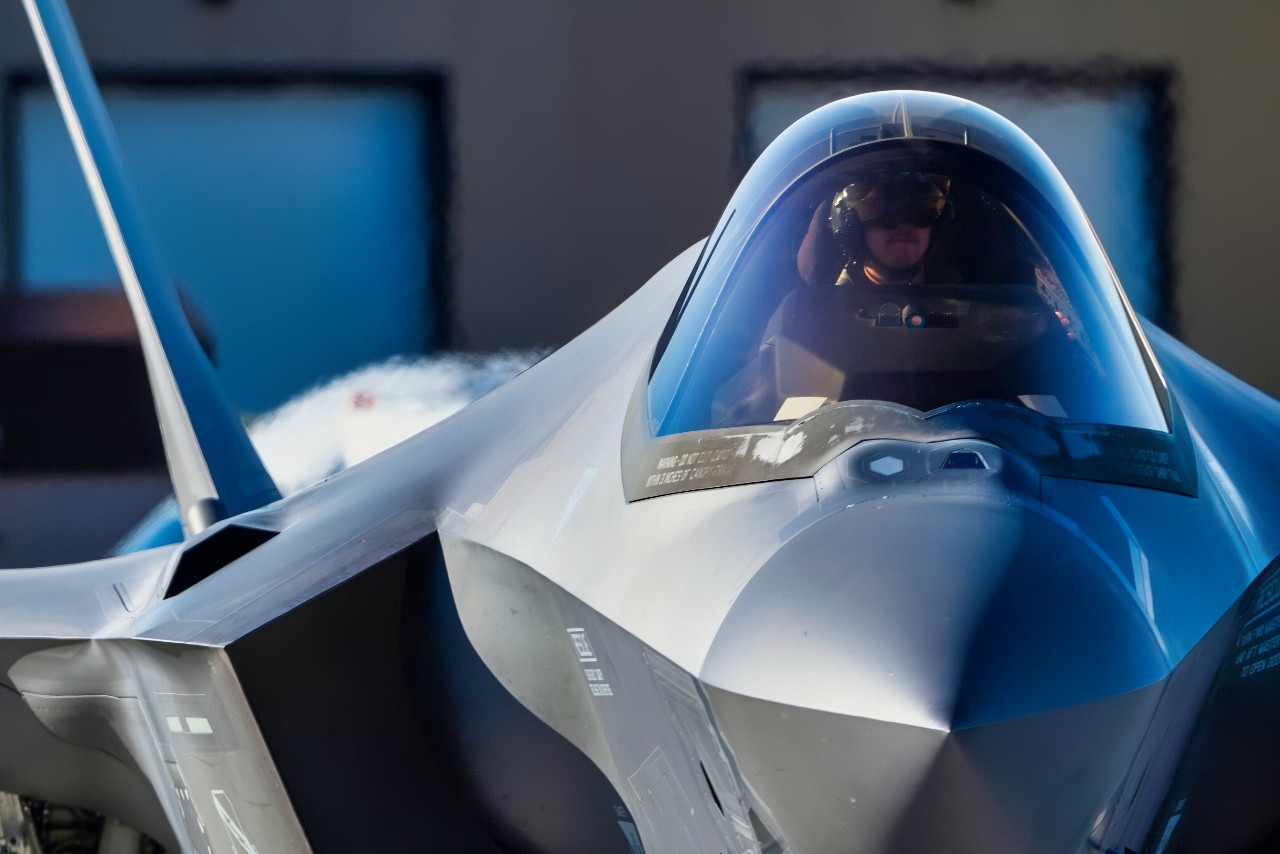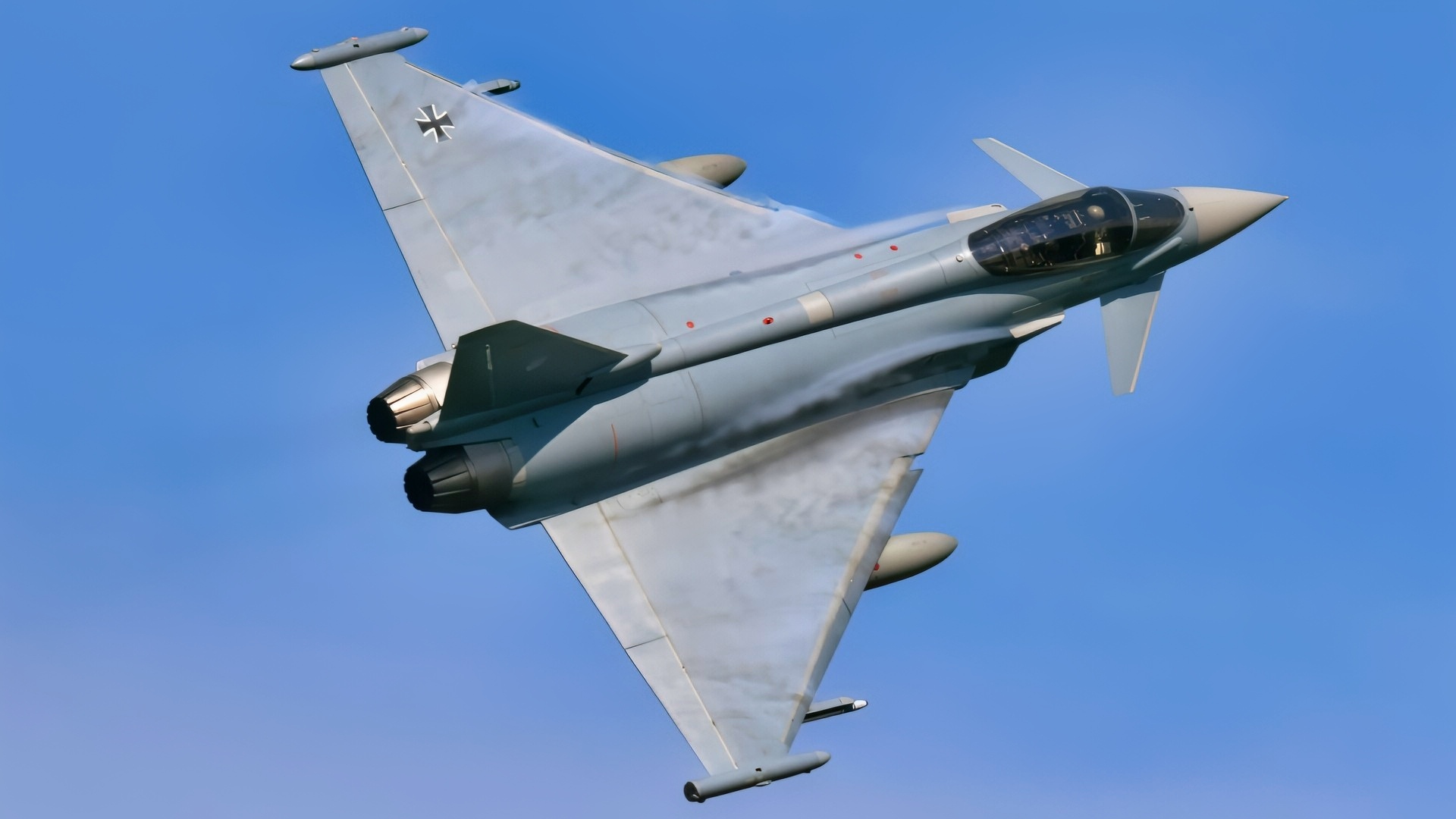Key Points and Summary – Canada has committed funds for an initial batch of 16 F-35s and is building new facilities at Cold Lake and Bagotville, yet Ottawa has kept the larger 88-jet plan under review.
-Walking away now would be extraordinary—but not impossible.

Seven F-35 Lightning II aircraft wait to take off for a U.S. Air Force Weapons School training mission at Nellis Air Force Base, Nevada, Jan. 31, 2024. The U.S. Air Force Weapons School teaches graduate-level instructor courses that provide advanced training in weapons and tactics employment to officers and enlisted specialists of the combat and mobility air forces. (U.S. Air Force photo by William R. Lewis)
-Critics can marshal five arguments: spiraling modernization costs and delivery risk; more generous industrial and sovereignty terms from European options; a mission set—NORAD alerts and Arctic patrols—where stealth is not always decisive; uniquely Canadian basing and sustainment realities; and politics, including trade leverage with Washington.
-None of this erases the F-35’s coalition advantages, but it explains why the debate isn’t over.
The F-35 Debate in Canada Isn’t Settled
On paper, Canada chose: 88 F-35A fighters, with the first tranche funded and new hangars rising in Alberta and Quebec.
In practice, Ottawa has kept a political and programmatic door ajar.
A formal review of the deal, plus a first-lot commitment of only 16 aircraft, gives any government a narrow lane to slow-roll, resize, or split the buy.
That doesn’t mean it will.

U.S. Air Force Maj. Kristin “BEO” Wolfe, F-35A Lightning II Demonstration Team commander, flies over Kennewick, Washington, during the Tri-Cities Water Follies Airshow Over the River, July 30, 2023. The F-35 Demonstration Team participated in the 2023 Tri-Cities Water Follies airshow and various other events in support of their mission to recruit, retain and inspire new and old generations of Airmen. (U.S. Air Force photo by Staff Sgt. Kaitlyn Ergish)
It does mean we can ask a fair question: what are the best arguments for not finishing all 88 as F-35s and shifting some portion to a European fighter like the JAS 39 Gripen or Eurofighter Typhoon?
Below are the five arguments you hear in Ottawa, uniformed and civilian, when the doors are closed.
1) Cost And Delivery Risk Are Not Getting Easier
The F-35’s core appeal is future capability.
The catch is the future keeps moving right.
The “Block 4” upgrade package—new sensors, electronic warfare tools, and weapons options—has been repeatedly delayed, with the Tech Refresh hardware and software that enable Block 4 also slipping.
For buyers, that sets up a familiar bind: pay for jets now, then pay again to bring them up to the version you actually wanted.
Add in the cost of specialized facilities, secure data systems, and a sustainment bill that remains under pressure, and a finance minister can plausibly argue the risk curve is steeper than advertised.

U.S. Air Force Maj. Melanie “Mach” Kluesner, pilot of the F-35A Demonstration Team, performs aerial maneuvers at the Sun ‘n Fun Airshow in Lakeland, Florida, April 4, 2025. The demonstration team showcases the skill and precision U.S. Air Force pilots and aircraft are capable of. (U.S. Air Force photo by Senior Airman Nicholas Rupiper)
Stealth remains priceless on Day One of a major war—but Canada’s day-to-day mission is mostly Day 1,000, not Day One.
2) Industrial And Sovereignty Terms Look Better In Europe
Canada already earns steady work through the F-35 program.
But “workshare” is different from real leverage over the product.
European suitors have been explicit: assemble here, train here, and give Canadian firms deeper access to upgrades over time.
Gripen’s pitch has long been about local assembly and genuine technology transfer; Typhoon’s backers, a multinational consortium, point to a proven European supply base.
There’s also the sovereignty question: how much of your fleet’s logistics data, mission-data files, and upgrade pacing sits outside your control?
With the F-35, the answer is “more than with a national or European design.” For a country that prizes autonomy—especially in Northern skies—that argument lands.

An F-35A Lightning II fighter jet, a single seat, single engine, all-weather stealth multirole fighter aircraft, assigned to the 466 fighter squadron prepares to taxi across the flightline at Hill Air Force Base, Utah, Oct. 5, 2024.
3) Mission Fit: NORAD First, Stealth Later
Canada’s pilots spend most of their flying lives on domestic and continental missions: quick-reaction scrambles for unidentified aircraft, sovereignty patrols, and North American Aerospace Defense Command (NORAD) taskings.
Those are hemispheric jobs where long-range sensors, reliable communications, low operating cost, and high readiness matter as much as disappearing on a radar screen.
A modern, non-stealth fighter with an advanced radar, an infrared search sensor, and long-reach missiles can do that work well—and do it now.
One specific sore point: the Meteor beyond-visual-range missile is already integrated into Gripen and Typhoon, whereas full integration into F-35 variants has slipped into the 2030s.
If you’re buying to today’s requirement, not a 2031 promise, that detail resonates.
4) Arctic Realities: Dispersed Ops Beat Delicate Hangars
It’s hard to overstate how much Canada’s geography shapes its fighter choice.
The Arctic is big, cold, remote, and unforgiving.
Sweden built Gripen for exactly that sort of environment: short, rough dispersal strips, quick turnarounds by small ground crews, and a stubbornly low maintenance burden.
Typhoon is less “road-base-ready,” but it has proven cold-weather chops with European partners.

A German Air Force pilot, assigned to the German Air Force Weapons School, conducts strafing runs with an Eurofighter Typhoon in conjunction with U.S. Air Force Joint Terminal Attack Controller assigned to 2d Air Support Operations Squadron identifying targets on the ground at the 7th Army Training Command’s Grafenwoehr Training Area, Germany, June 9, 2021. (U.S. Army photo by Gertrud Zach)
The F-35 can and does operate in the North—Norway is proof—but it asks for more: climate-controlled shelters to protect stealth coatings, specialized tools and secure networks, and deeper logistics tails.
Ottawa is already pouring money into new facilities that meet those needs, but critics will note those dollars could buy more jets—or more flying hours—under a different concept.
5) Politics And Leverage: Keep Options, Keep Influence
A fighter buy is foreign policy by other means.
Ottawa’s current review openly links the F-35 decision to broader trade friction with Washington and a desire to show that Canada is not locked into a single supplier.
Keeping European options alive also signals to allies that Canada is serious about its defense-industrial base—something that matters as Ottawa weighs submarine choices and other big maritime investments.
There’s a domestic angle, too: jobs and supply chains in Quebec, Ontario, and Western Canada are easier to defend when more of the fighter is built and sustained at home.
The Counterargument Is Strong—And Honest
If you favor staying the course, your brief is straightforward.
The F-35 is the alliance standard, fielded by the United States and a dozen key partners.
It sees first, shoots first, and stitches the air picture together for everyone else. Those are not brochure lines; they reflect hard lessons from modern conflicts.

The Saab JAS 39E Gripen is Sweden’s modern multi-role fighter, built specifically for versatility and resilience against Russian threats. Image Credit: Creative Commons.
Walking away after the first 16 jets would incur penalties, delay deliveries, complicate training pipelines, and require Canada to invent a unique, mixed fleet in an era when every extra type adds cost and friction.
Stealth also matters more tomorrow than yesterday as Russian and Chinese sensors proliferate.
On that view, the smartest move is to grind through the upgrade turbulence and land where the coalition is already going.
What “Rethinking” Would Really Mean
Even the critics rarely argue for a full pivot. The realistic “Plan B” would be mixed: keep the initial F-35s to anchor coalition missions that demand stealth, then add a European type optimized for NORAD alerts and Arctic patrols, where availability and cost per hour rule.
That would lower risk, hedge politics, and spread industrial benefits. It would also add training syllabi, spares pools, and simulators—costs that quietly devour savings.
In other words, there is no magic cheap path, only a different set of trade-offs.
The Bottom Line
Canada is closer to being “all-in” on the F-35 than casual headlines suggest—money is out the door, bases are being rebuilt, and pilots are lining up for training.
Yet five lingering issues keep the countercase alive: rising modernization risk; stronger local-industry promises from Europe; a NORAD-first mission that doesn’t always need stealth; Arctic sustainment realities; and the politics of leverage with allies.
If Ottawa does press the pause button, it won’t be an act of nostalgia. It will be a bet that a mixed fleet, bought on terms that maximize sovereignty and industry, better matches Canada’s unique map and missions.
About the Author: Harry J. Kazianis
Harry J. Kazianis (@Grecianformula) is Editor-In-Chief and President of National Security Journal. He was the former Senior Director of National Security Affairs at the Center for the National Interest (CFTNI), a foreign policy think tank founded by Richard Nixon based in Washington, DC. Harry has over a decade of experience in think tanks and national security publishing. His ideas have been published in the NY Times, The Washington Post, The Wall Street Journal, CNN, and many other outlets worldwide. He has held positions at CSIS, the Heritage Foundation, the University of Nottingham, and several other institutions related to national security research and studies. He is the former Executive Editor of the National Interest and the Diplomat. He holds a Master’s degree focusing on international affairs from Harvard University. Email Harry: [email protected].
More Military
Why the U.S. Navy Finally Said No to the F-14 Tomcat
Israel’s Merkava Tanks Have a Message for Any Army On Earth
The Mach 1.4 X-59 Could Create Military Nightmares for Russia and China










